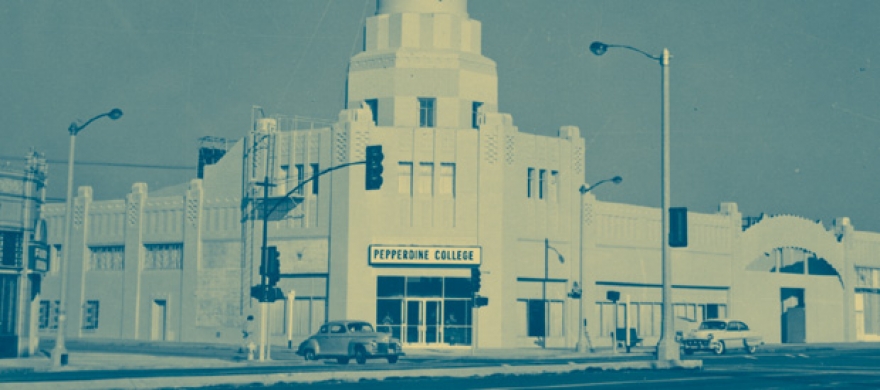A Long Deep Past
Pepperdine Magazine is the feature magazine for Pepperdine University and its growing community of alumni, students, faculty, staff, and friends.
William Faulkner wrote in Requiem for a Nun, "The past is never dead. It's not even past."
Nothing illustrates that line more than how the themes of Pepperdine's first 20 years, 1937-1957, shape what we think and what we do in this University today. We are still a young institution but we are far from our launching year—18-year-old freshmen in 1937 would now be over 90 years old. Twenty-two-year-old seniors in 1957, at the end of the Batsell Baxter/Hugh Tiner era, would now be 75 years old. Only a handful of people who were on staff in those years are even alive. We have a long and deep past. But it is not dead. It is not even past.
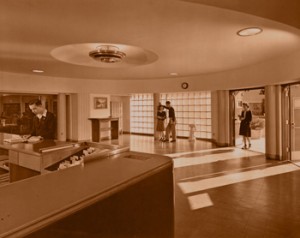
Entrance to the library
Born in 1886 to hard-working, honest, faithful farm people, George wanted more than a farm life and went to business college in Parsons, Kansas. He learned business practices that included skills like shorthand. That was where, in 1905, he saw his first automobile.
He worked in Kansas City as a stenographer. He loved to recount how, in a pivotal moment, he refused point-blank to tell a lie to protect his employer who then kept him on out of respect for his ethical sensibility—and his nerve.
In 1909 he started a tiny mail-order auto-parts business which developed into a store in Kansas City. Tuberculosis caused him to move to Denver, Colorado, where he opened a second store. And Western Auto was underway.
In 1916 he moved to Los Angeles, California, and opened a store at 1200 South Main Street. By 1920, there were 11 stores across the western U.S. and sales exceeded $2 million—equivalent to $11 million in today's dollars.
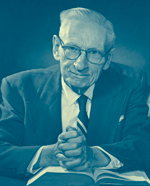
George Pepperdine
As Western Auto expanded in the 1930s it became a nationally respected name in retail trade; by the 1930s George Pepperdine was in demand as a speaker to chambers of commerce and civic and business groups. He spoke on radio to promote California and the Pacific Coast to the rest of the nation and about how to achieve ethical success in business; he was an important national voice, a personage long before he was the founder of a college. Dr. David Baird has said that George Pepperdine's life in those years is worthy of the interest of California historians for his role in creating a California-consciousness across the nation and setting the stage for the vast inflow of people in the subsequent decades.
In 1930 his wife died. As he dealt with his loneliness, he also faced the great economic depression that threatened the existence of his company. Though his stock was greatly devalued, in 1931 he established the George Pepperdine Foundation, which he hoped might one day enable him to help worthy causes. It was difficult, but Western Auto survived the depression and he sold it in 1939. He helped a lot of good causes with the money. He was always supportive of the Boy Scouts, the YMCA, and helped start and sustain 40 Churches of Christ in the western U.S. After starting the school bearing his name, he gave an anonymous gift of $25,000—about $500,000 in today's dollars—to Harding College and saved the school from foreclosure.

The campus library
In 1934 he married Helen Davis, attracted to her passion for the needy. She quickly pulled him into the work of establishing and supporting charitable institutions for disadvantaged young women.
And there were regional differences in the church that made it even more complex than today. Embedded in Kansas churches, and churches of the upper Midwest, there was militant opposition to the rise of colleges in the mid-South that sought support from churches. Because of that background, he was an unlikely candidate to endow a Christian college. True, his move to California brought him into contact with co-religionists with backgrounds in Texas and Tennessee who were less resistant to Christian education, but he paid attention to the echoes of his Kansas church origins to the end of his life.
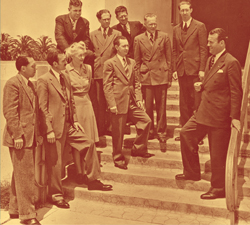
Hugh Tiner (far right) and staff
He admired a brilliant young man named Hugh Tiner, the 30-year-old supervisor of the Los Angeles County public schools. A Texas native with degrees from Abilene Christian and Stanford, Tiner was just as committed to the church of his youth as was George Pepperdine, and he believed that Churches of Christ in Southern California could be advanced by a college like the one he had attended in Abilene, Texas.
In George's autobiography, he says that the idea for founding a Christian college came "through the vision and enthusiasm of a young man…Hugh M. Tiner." In a letter written in March 1937, he referred to Tiner's proposal for "the establishing of a college in or near Los Angeles, which you are asking me to help finance."
Most of our sources will say things like, "As much as anyone, Hugh Tiner was in the forefront of promoting a Christian college on the West Coast." That is an understatement. There were others in the hunt, but the evidence points to Hugh Tiner as the originator of the idea and as the one who made the sale to George Pepperdine. We have never given him sufficient credit for his vision and for having the courage to approach his wealthy friend with this audacious proposal.
George responded cautiously, but as he says in his autobiography, "If a college could be established which would provide a Christian environment, employ dedicated professors with a profound faith in God, provide a sound curriculum which would reflect high ideals in every area— was interested."
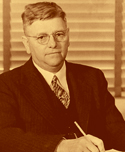
Batsell Baxter
Tiner called in the more experienced Batsell Baxter, a man George Pepperdine's age, and president of Abilene Christian College during Tiner's student years. Tiner brought him to Los Angeles to help close the deal with Mr. Pepperdine. Pepperdine wrote in Faith Is My Fortune that he told Baxter and Tiner, "I don't want another college that will be dependent on the churches for support. I have in mind a four-year liberal arts college, an institution of higher learning where any worthy boy or girl, regardless of his religion or financial standing, can get an education. And I want it to be a college that is academically sound, based on Christian faith."
Agreeing to start the college, his foundation would furnish the initial cost and supply "a good part" of the operating cost. He specified, however, that students would be expected to pay tuition. That was in February 1937. To the shock of Tiner and Baxter, George said he wanted his college to open within seven months, by September 1937.
1937! Remember that in 1937, the country and the world were still in the Great Depression, which didn't end in the United States until after 1941. In fact, in 1937, there was a surprise recession within the depression—the stock market plunged again and unemployment that year moved from 14.3 percent to 19 percent (at the depth of the depression, unemployment stood at 25 percent). That year, a half-million Americans were involved in sit-down strikes, Hitler was on the move, Japan took five major cities in China and sank a U.S. gunboat, the Spanish Civil War produced Guernica, and Italy withdrew from the League of Nations. Was this any time to start a college?
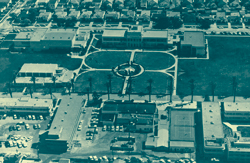
The original Pepperdine campus in Los Angeles
George's deep contacts in Los Angeles enabled him to quickly find a site for the campus—relatively open land in southwest Los Angeles, a former working ranch with the large house still intact, a long and narrow 34 acres. He pushed hard for the immediate construction of a three-storied administration and classroom building.
Baxter agreed to come as president and, without shame, recruited faculty from Abilene, Lipscomb, and Harding. Tiner gave up his career with the Los Angeles public schools and was appointed dean. And Tiner was appointed to the founding board of trustees—on which he served while he was dean and for his entire term as president, another indication of George Pepperdine's immense confidence in Tiner and, I believe, an indication that he considered the school to be Tiner's brainchild.
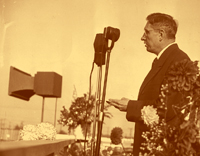
George Pepperdine speaking on Dedication Day, 1937
This is a speech that the Pepperdine community gathers to hear at Founder's Day every September. It is important to understand that while he may have had the church of his formative years in mind, he knew there had to be a larger constituency given the stage of development of Churches of Christ in California. He was a man of the world, as well, and must have also understood that these views would have to sound right to the Los Angeles business community: "This institution, while placing special emphasis on Christian living and fundamental Christian faith, shall be a private enterprise, not connected with any church, and shall not solicit contributions from churches." But he went on, "We want to build in the student, Christian character and a desire to prepare for Christian service, Christian living, and Christian influence in the world."
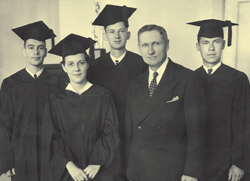
George Pepperdine with the first graduating class
The school opened with 167 students from 22 states, 21 faculty teaching in eight departments. The only building ready was the administration/classroom building in so-called "Streamlined Moderne" style—all rounded corners in the exterior architecture. It leaked when it opened and probably still does. There were no dormitories; students were housed at the William Penn Hotel and shuttled to and from campus in a chartered streetcar. A dining hall, a gymnasium, the library, two dormitories, an auditorium, fine arts complex, home economics building, and business classroom building were opened between 1938 and 1946.
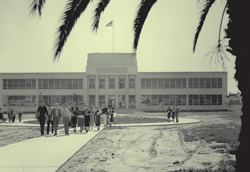
Administration building, George Pepperdine College
All of it was funded from the George Pepperdine Foundation. Sources differ, but the total amount coming from George Pepperdine for campus construction, endowment, and operating costs between 1937 and 1946 was between $3 to $3½ million. A simple inflation calculator says that in 2010 dollars, that is over $53 million The college was accredited in April 1938 by the Northwest Association of Colleges, seven months after opening.
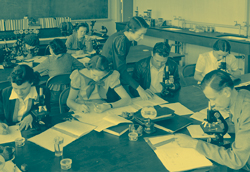
Science class
In the late 1940s and early 1950s, the assets of the foundation were badly invested
and wholly depleted, as were George and Helen Pepperdine's own assets. Creditors tried
to take over the assets of the college itself. It was a train wreck! The foundation
was dissolved in 1951. There was full and poignant truth in George's reply to a young
boy who once asked him how much money he had. "All I have is what I gave away," he
replied. "Freely ye have received, freely give," the words on our seal, may be difficult
to translate into today's tuition structures—but those words surely describe George
Pepperdine.
The board of trustees began to look at operating deficits with no hope of endowment
income. In 1952 the Western College Association denied renewal of accreditation, something
not restored until 1953, largely because of the association's alarm about the school's
financial plight and the bad publicity generated by the collapse of the George Pepperdine
Foundation and his own insolvency. There were important reasons for the board to seek
a leadership change in 1957—survival hung in the balance.
Some facts of the first 20 years:
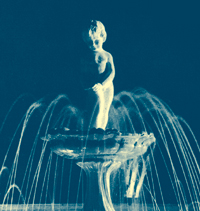
Dolores Fountain
The Graphic was started in the first year, named because of the G-P-C forming the first, middle, and last letters of George Pepperdine College.
Some say the Waves designation was not because the campus was three miles from the Pacific Ocean but rather for the ripples in the mud puddles that formed in the unfinished landscape of the campus in the very rainy first year of operation.
Dolores was in the middle of the campus fountain by 1940. She was a statue of a two-year-old girl covered in part by a towel that she held to her face. She was frequently stolen, sometimes by Loyola students, sometimes by Pepperdine students, sometimes returned and sometimes not, replaced by a slightly different version.

Graduation day
Enrollment did not exceed 500 until after the end of World War II in 1945. The GI Bill® passed in 1944, offering tuition assistance to over two million WWII veterans. Enrollment at Pepperdine increased in 1945 by nearly 40 percent to 824, peaking at 1,723 in 1947. We're talking here about increases bought on by men coming straight from active duty in the army, navy, and marines! Enrollment declined gradually to below 1,000 after 1948, and rose again to 1,100 by 1956.
In 1939 and 1947 Pepperdine won the Drake Relays, setting records for that event. In 1947 Pepperdine's football team won against Nebraska Wesleyan in the Will Rogers Bowl in Oklahoma, for which we have a banner in our field house. We owe this to the GI Bill®.

Enrollment begins for the graduate degree in religion, 1944.
The first graduate degree of any description among colleges related to Churches of Christ was Pepperdine's MA in religion, started in 1944 with a distinguished faculty.
In 1946, the debate team won the Pacific Southwest Tournament over USC, all the UC campuses, Redlands, and College of the Pacific.
We should not forget that while Pepperdine allowed African American students to enroll from the beginning, they were not allowed to live in the campus dormitories for several years after the college's founding. Yes, those were different times, and Pepperdine was ahead of sister schools located in the South in its admission policy, but there is shame in such a residential policy.
About Steven S. Lemley 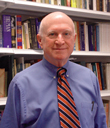
I first set foot on the original Pepperdine campus in 1964. I would never have done that without my interest in Emily Young, whom I ultimately convinced to marry me. I am a Pepperdine graduate, twice over, as well as a graduate of Ohio State and I'm also a graduate Lubbock Christian University (LCU)—where, from 1978 to 1993, I worked as academic dean for four years and as president for 11. I serve on the LCU board of trustees. I am a former dean of students at Pepperdine, a former provost at Pepperdine, and now a full-time faculty member—which is all to say that I am well acquainted with what drives colleges, how they work, how important their histories, cultures, and identities are.
Excerpted from an address delivered at the Pepperdine University Bible Lectures, May 5, 2010
